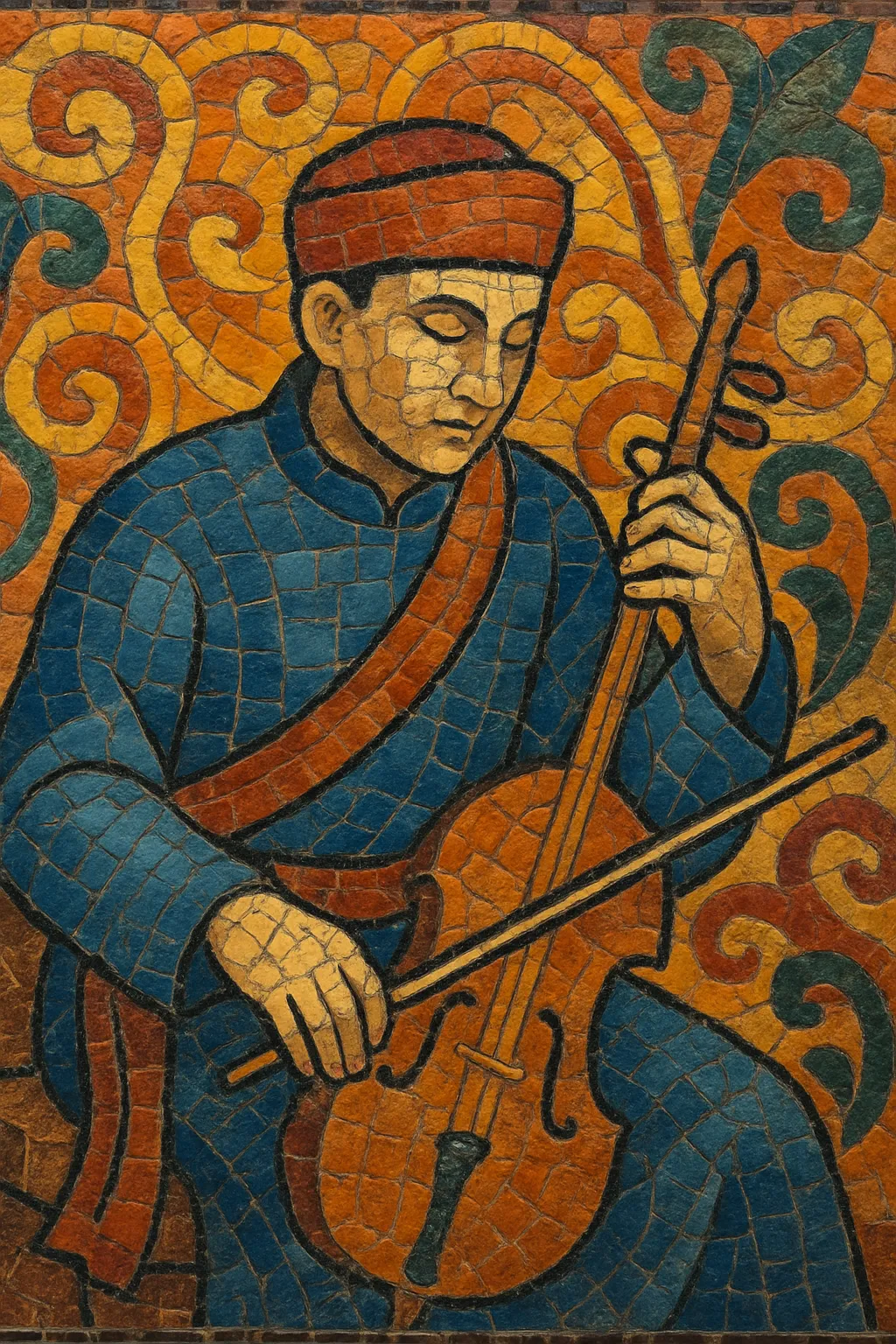
Boedra is one of the two principal traditional song-and-dance styles of Bhutan, the other being zhungdra. The term itself combines boe (Tibet) and dra (music), reflecting its historical ties to Tibetan musical aesthetics.
Characterized by a brighter, more rhythmic and danceable feel than zhungdra, boedra features lively tempos, strophic melodies, and clear, memorable refrains. Performances commonly include the dranyen (Bhutanese lute), chiwang (two‑string fiddle), and lingm (bamboo flute), supporting high, projecting vocals that alternate between solo lines and group responses. Boedra is frequently presented at social gatherings and festivals, where coordinated circle dances and gesture-based choreography accompany the music.
Boedra literally means “Tibetan music” (boe = Tibet, dra = music), signaling the genre’s formative connections with Tibetan courtly and folk traditions that filtered into Bhutan through cultural exchange, trade routes, and monastic networks.
While Bhutan’s older zhungdra style coalesced in the 17th century, boedra took clearer shape later, maturing during the 19th century as a livelier, more dance-oriented counterpart. Musicians adapted melodic turns and poetic conventions associated with Tibetan repertoires, but localized them with Bhutanese language, instruments, and dance steps. The result was a distinctly Bhutanese style that still acknowledged trans-Himalayan affinities.
Boedra songs were (and remain) central to community celebrations, archery-related festivities, and regional gatherings. Performances typically involve a lead singer accompanied by dranyen, chiwang, and sometimes lingm, with interlocking handclaps and choreographed circle dances. The vocal delivery is high and ringing, with ornamentation that is more compact and rhythmically buoyant than zhungdra’s long melismas.
In the modern era, institutions such as the Royal Academy of Performing Arts (RAPA) in Bhutan have helped codify, document, and teach boedra repertoire and dance choreography. Although contemporary pop styles have risen in popularity, boedra remains a cultural touchstone, taught in schools, featured at festivals (tshechu and secular events), and performed by regional troupes to sustain living tradition.

